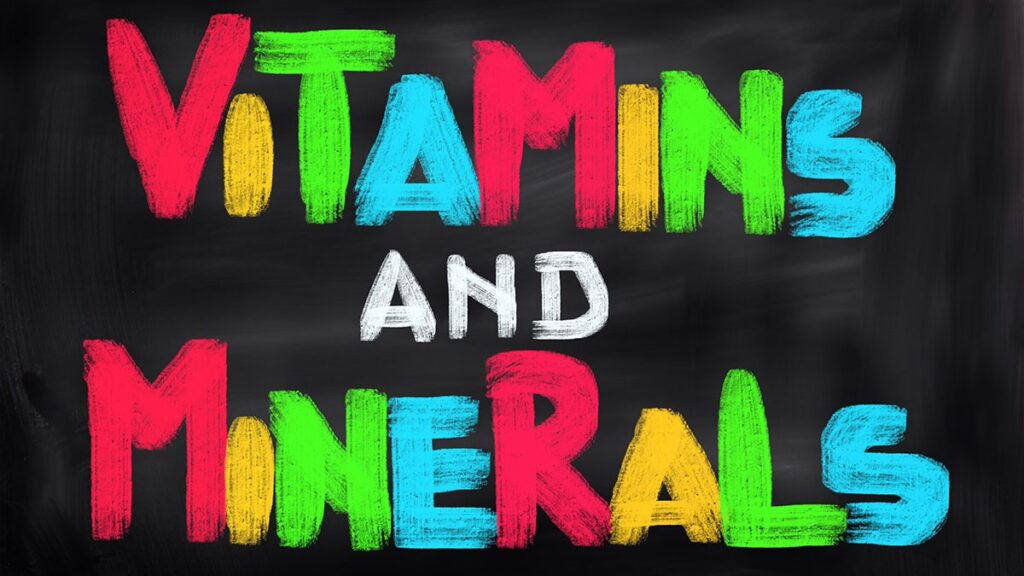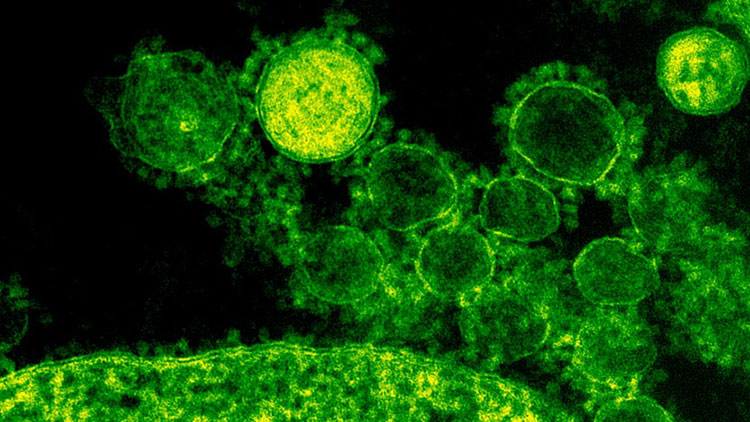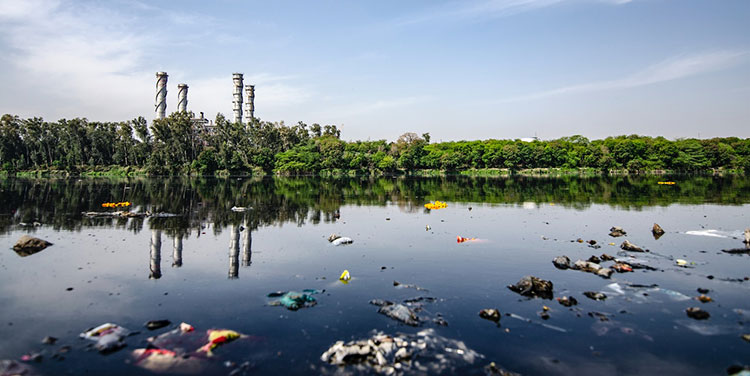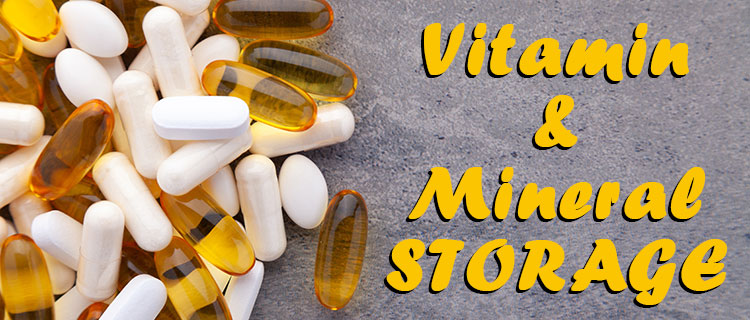
When you’re planning for a long-term crisis, and plotting out what foods to store, don’t forget the importance of vitamins and minerals. It’s proper pre-planning and knowledge that are going to be your true friends. Pre-planning food is important so that you get the right types of food in your long term food storage; knowledge includes knowing how to keep those foods free of insects and how to prepare them.
However, it’s not only food you should be considering. Being prepared health-wise for maintaining your health and even using certain hacks for how to get out of a health emergency goes a long way toward keeping your tribe happy and healthy until society normalizes.
I mention a variety of different vitamins in this article. For convenience’s sake, there’ assorted in the table below.
This article is about stocking vitamins for a collapse. If you are planning on starting a vitamin regimen today, it is always advisable to consult with your physician first.
| Product | Retailer |
|---|---|
| Bronson Vitamin A 10,000 IU | Amazon |
| Solgar Vitamin C 1000 mg | Amazon |
| NOW Supplements, Vitamin E-400 IU | Amazon |
| Now Foods, Zinc, 50 mg | Amazon |
| NOW Foods Selenium 200 mcg | Amazon |
| NOW Supplements, Vitamin D-3 10,000 IU | Amazon |
| Seeking Health Molybdenum 500 | Amazon |
| Nature’s Bounty Vitamin B-Complex | Amazon |
| NOW Supplements, Pantothenic Acid (Vitamin B-5) | Amazon |
| Nature’s Bounty Magnesium 500 mg | Amazon |
| Purely Holistic Lithium Orotate 5mg | Amazon |
| Floradix 500ml | Amazon |
Why Stock Vitamins and Minerals?
Having adequate vitamins and minerals is important to maintain health. We all need vitamins and minerals daily, and unfortunately, there’s no way around it. Not providing the necessary vitamins and minerals for your body’s cells leads to deficiencies that affect every aspect of your health: how you think, feel, behave, heal, susceptibility to infections, metabolism, colon function, aging, and more.
The Best Multi-Vitamin to Stock
A good multi-vitamin is essential for health maintenance, and not all multi-vitamins are alike. Many are not balanced in their vitamin or mineral ratios, and this leads to deficiencies of missing nutrients the supplement does not provide. The best balanced multi-vitamin I’ve found on the market is the Shaklee VitaLea for Men (and one for women), simply because of its vitamin and mineral ratios, and shelf stability.
Here’s a list of examples of how the ratios are correct:
- The calcium to magnesium ratio is close to a 1:1 to 1:1.25 ratio (450 mg:350 mg)
- All the B vitamins are included (many multis are missing biotin, vitamin B-5, B12 or they are imbalanced in the B vitamins)
- They include molybdenum. Deficiency of this trace mineral causes anxiety and panic attacks.
- Also included is copper. Many companies leave copper out of the formula altogether because a small percentage of people have a copper disease called Wilson’s disease. You still need copper; it’s an essential mineral.
- They include vitamin A in a non-carotenoid form. (Supplements with only beta-carotenoid are only 33% absorbed, leaving you with a deficiency of the active form of vitamin A.)
- They include manganese, a mineral depleted in the body when glyphosate pesticides are used on foods and the food is consumed.
Why a Multi-Vitamin is Not Enough
Even if you already have a good multi, you cannot count on it to address all the demands of your body that are occurring when you are in a crisis. You’ll need a stash of individual nutrients that can be added to your food storage for certain conditions as a means of prevention of other problems you could face in a SHTF situation.
1 – Infections Could Become Plentiful in a SHTF Event

Infections, cured with simple antibiotics in normal times, could become serious problems where there is no doctor. The protocol I use during a threatening infection is this one:
- 50,000 IU vitamin A daily
- Vitamin C, 1000 mg twice daily
- 400 IU vitamin E daily
- 50 mg zinc daily
- 200 mcg selenium daily
- 10,000 IU vitamin D once daily
The supplements are taken each day until the infection is totally gone, plus an additional two days. These are dosages for teens and adults; babies and children can be given one dosage every two days.
If you are not comfortable with these doses, it’s may be because the vitamin A is high. The Linus Pauling Institute recommends an upper limit of 10,000 IU for vitamin A in multi-vitamins but does not say anything about the use of this antioxidant in higher amounts for short-term doses, i.e., an infection when your mucosal membranes need higher amounts to get over the infection. Still, if you have liver cirrhosis, their upper limit is a safer bet because vitamin A is fat-soluble and metabolized in the liver. Thus, with decreased liver function, your body may not be able to handle 50,000 IU.
Vitamin A deficiency impairs innate immunity by impeding normal regeneration of mucosal barriers damaged by infection, and by diminishing the function of neutrophils, macrophages, and natural killer cells. It’s also required for adaptive immunity and the development of T and B cells. When vitamin A availability from food is low, infectious diseases precipitate a deficiency. This is known information published in 2001 by University of California Davis researcher, C.B. Stephensen.
Vitamin E is a fat-soluble antioxidant that regulates the production of free radicals. It has known immunomodulatory effects under normal and disease conditions, and regulates T and B cells. Zinc plays a central role in the immune system; when deficiency occurs, people become increasingly susceptible to infections. Selenium is needed for the proper functioning of the immune system. And vitamin D protects against acute respiratory tract infection overall, according to meta-analysis studies.
You can get individual bottles of each of these supplements to place in your food storage in a cool, dry location:
- 10,000 IU vitamin A
- 400 IU vitamin E (d-alpha-tocopherol)
- 50 mg zinc
- 200 mcg selenium
- 5,000 IU vitamin D3
The vitamin C is generally not stable for long-term storage, but you can purchase one or more pounds of camu-camu fruit in powdered form, which provides you with 682 mg per teaspoon. It’s easily mixed into juice or water.
2 – Energy Dwindles the Longer a SHTF Event Drags On

When your energy starts declining, the quickest way to regain it is to address it nutritionally, especially if you have your food storage stacked with nutrients for a long-term disaster. Following are some reasons why you may not have enough energy, and the antidote for them.
Reason 1: B Vitamin Levels are Low
Antidote: B complex 50 mg or 100 mg, one daily. 50 mg means 50 mg Vitamin B-1, B-2, and B6. Vitamin B-3 (niacin) should be higher than 50 mg when you increase the other B vitamins, usually to 100 mg. B-5 may be taken at much higher dosages without worrying about B vitamin ratios. 500 mg daily is a quick way to reduce stress as well, and this amount may be increased to 2000 mg daily if necessary.
Length of time needed: 10 days to 1 month
Reason 2: Iron Levels are Low
If you aren’t eating meat, the chances are good you aren’t getting enough iron. Iron deficiency anemia results in fatigue because the red blood cells aren’t getting enough oxygen.
Antidote: Blackstrap molasses, one tablespoon or more daily along with 2 doses of 10 ml Floradix Floravital® Iron and herbs. Both these are natural sources of iron and come in glass bottles and should be wrapped I bubble wrap to prevent breakage.
Length of time needed: 2 to 3 months, the length of time to build new red blood cells.
Reason 3: Body Can’t Detoxify Itself
Once toxins start accumulating in your body, you can expect fatigue.
Antidote: 200 mcg selenium and 30-50 mg zinc
Length of time needed: 2 weeks
3 – Mental Disorders to be Expected During a SHTF Event

Depression is often alleviated with added vitamin D (10,000 IU daily for 2 months), magnesium (400 mg daily for 2 months), a B-50 mg complex (once daily for 30 days), vitamin C (1000 mg twice daily), lithium orotate (5 mg elemental lithium but not in conjunction with the drug lithium once daily for 3 months) and/or zinc (50 mg daily for one month).
Anxiety is alleviated quickly with 500 mcg molybdenum (once daily for 3 months), B complex as above, magnesium as above, and pantothenic acid (500 mg one to four times daily for a month).
Nutrients can’t be expected to alleviate narcissism. It is known that low blood sugar aggravates all mental disorders, and thus chromium (500 mcg daily for 30 days), zinc (50 mg daily for 30 days), and the B complex (once daily for 30 days) will help better blood sugar regulation.
4 – Toxicity Situations Arise During a SHTF Event

In any crisis, there’s always a risk of toxicity. There could be toxic chemicals in flood waters, tornadoes, and fires, and high concentrations of them bombarding the body will deplete your selenium, molybdenum and zinc levels plus affect your mucosal membranes in your throat, lungs and GI tract.
Here are the doses to protect you:
- Selenium: 200 mcg daily during the toxicity and another 2 weeks thereafter
- Molybdenum: 500 mcg daily during the toxicity and another 2 weeks thereafter
- Zinc: 50 mg daily for 2 months
- Vitamin A: 20,000 IU daily for 2 months
How Many Vitamins You Need to Stock
My suggestion is that you prep for six months of a long-term disaster or crisis and count on every person in your tribe getting at least three infections, suffering mental disorders, becoming toxic and experiencing fatigue during that time period. Better to be over-prepared than underprepared.
Per person, you can plan for the following:
- Vitamin D3, 5,000 IU, 300 capsules
- Vitamin A, 10,000 IU, 300 capsules
- Vitamin E, 400 IU, 200 capsules (use the dry form; it has a longer shelf life)
- Vitamin B complex, 2 bottles blackstrap molasses and 250 capsules B50
- Zinc, 50 mg, 250 capsules
- Molybdenum, 500 mcg, 250 capsules
- Selenium, 200 mcg, 250 capsules
- Pantothenic acid (vitamin B5), 500 mg, 350 capsules
- Vitamin C, 1000 mg coated more stable form, 600 tablets
- Magnesium, 400-500 mg, 300 tablets
- Lithium orotate, 5 mg elemental lithium, 300 tablets
- Floradix, 2 bottles, largest size
Buying in bulk helps a lot and there are many vitamin and mineral shops online that give greater discounts with bulk purchases.
Long-Term Storage Tips

Take caution with the B complex capsules; these are never good past the expiration date, and they are ruined by high heat. Vitamins except for vitamin A are oxidized with heat. Vitamin C is destroyed by heat. Minerals on the other hand, are quite stable with heat.
Here are some additional tips on long-term storage of vitamins and minerals:
- Once a B vitamin turns color from bright orangish yellow to dark orange, it’s too old. This reaction tells you the vitamin B2 has oxidized.
- Vitamin C is more stable when it has nothing added to it and you keep it out of the heat. You can get ascorbic acid in bulk from NOW Foods.
- You can get dry forms of vitamin A, vitamin E and vitamin D, which may be more stable and last longer. Vitamin A is stabilized with BHT.
- Vitamin E has been used as a preservative for different types of meats over the years; this tells us it is pretty stable naturally.
- The expiration dates on most supplement company supplements list the expiration dates for anywhere from 6 months to 3 years.
- As long as you keep supplements in a cool, dry, and dark location, you have provided optimal storage conditions.
- Storing plastic bottles of vitamins and minerals inside additional plastic containers provides a secondary layer of protection for them.
- Underground storage will double your shelf life. Refrigerator temperature quadruples the shelf life. Freezer temperature increases the shelf life by almost 8 times.
- In one study, vitamin D3 in liquid prescription medicines guaranteed its content more than 90% the amount claimed on the label for at least one year when stored at 25 degrees Celsius and for 4 months at 40 degrees Celsius. The manufacturers provided higher amounts of the vitamin than the original label to maintain potency over time.
- Food supplements generally lose potency over time. However, if they smell bad or look bad and their color has oxidized (gotten darker), this can mean there’s something toxic happening and they should be discarded.
- Gel caps and gummy or chewable vitamins do not store well because they have a higher moisture content. Any supplements with oil in them risk getting rancid. Probiotics die over time and are useless.
- Vitamin C and B12 are the most fragile; yet a vitamin C deficiency is common during a crisis.
- Once multi-vitamins have expired, dissolve them in water and fertilize your garden plants with them. The plants will use what’s available.
- Frequently rotate your vitamins while you are storing them. It’s recommended to stock enough for a year and then replace them every year.
- Binders and additives in vitamins and minerals affect the shelf-life because they degrade over time. Thus, the least amount of binders and additives in your supplements there are, the better.
- Jay Whimpey, Chemical Engineer and President of the American Civil Defense Association states that most multi-vitamins probably last 10-15 years, especially if they are stored properly and if they have a protective coating on them.
- Sprouting increases all nutrients including vitamin C. Sprouting gives you a whole food source of vitamins and minerals.
Start planning now for long-term disasters; don’t wait. You want to walk into the next crisis prepared on all fronts.
About the Author: Dr. Donna Schwontkowski is a retired chiropractor and has a master’s and bachelor’s in Nutrition and master’s in Herbology. She has taught classes on vitamins and minerals, diatomaceous earth (DE), and how to store and use them in crisis situations at a California survival school.

1 comment
One good Multivitamin for Men +50 I found is Bronson One Daily Mens 50+. Amazon has them 180 tablets for $14.99.
It has everything you listed a Multivitamin should have and in good ratios.